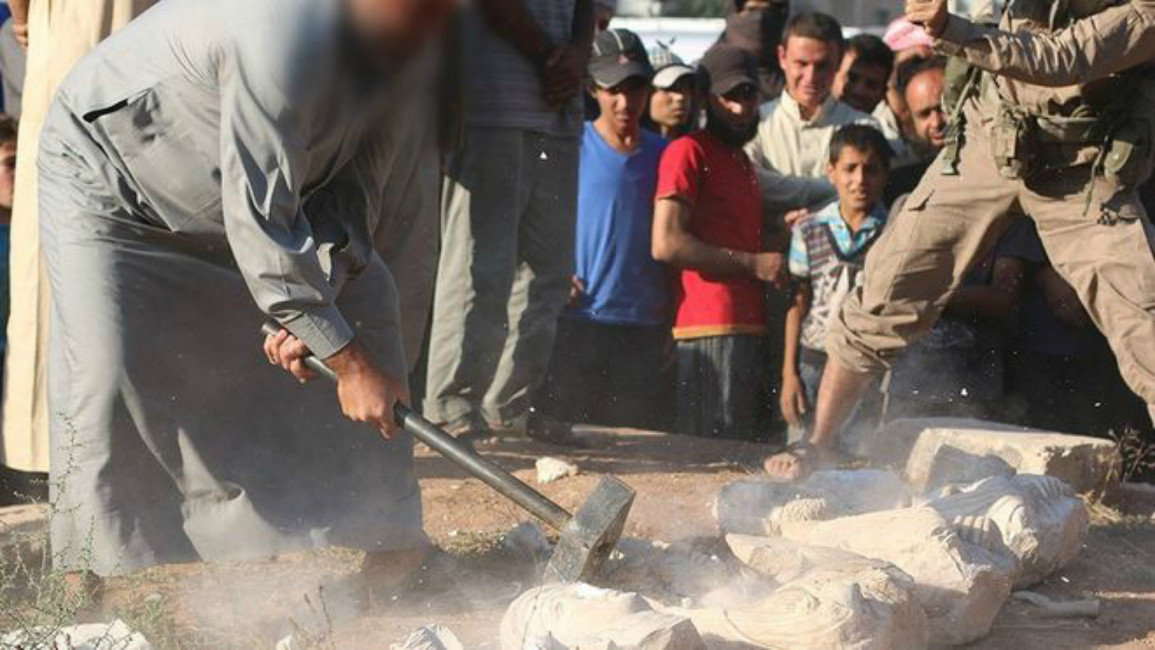IS destroys artefacts seized from Palmyra smuggler
IS destroys artefacts seized from Palmyra smuggler
The Islamic State says it has destroyed six busts from the historic city of Palmyra, which it found on a smuggler as he was leaving the site.
2 min read
Photographs released by the group showed IS fighters destroying the busts
The Islamic State group says it has destroyed six artefacts from the historic city of Palmyra after they were confiscated from a smuggler.
An IS statement said the six busts were found when the smuggler was stopped at a checkpoint. The issue was referred to an Islamic court, which ordered that they be destroyed and the man be whipped.
Photographs released by the group showed IS fighters destroying the busts with large hammers.
The UK-based Syrian Observatory for Human Rights said on Friday it was unclear if the busts were authentic or if the militants destroyed fake busts as a cover for the IS group's own antiquities smuggling.
Unesco's director-general, Irena Bokova, told the BBC that looting was being carried out on an industrial scale in Palmyra and that IS militants were "using the illicit trafficking, the selling of these objects in order to finance extremism and terrorism".
The destruction of the artefacts also comes a day after the IS said it had destroyed a 2,000-year-old, 15-ton statue known as the Lion of al-Lat.
Speaking to AFP, Syria's antiquities director Maamoun Abdelkarim called the destruction of the Lion of al-Lat "the most serious crime they have committed against Palmyra's heritage".
He said the statue, discovered in 1977, had stood at the gate of the town's museum, and had been placed inside a metal box to protect it from damage.
The Islamic State group has a strict Salafi interpretation of Islam and see tombs and non-Islamic vestiges as blasphemous and legitimate targets.
In March, IS members in Iraq razed 3,000-year old Nimrod and bulldozed 2,000-year old Hatra - both Unesco world heritage sites. It has also destroyed many statues and busts in Mosul's museum, which dated back thousands of years.
It has also destroyed thousands of Shia mausoleums in northern Iraq.



